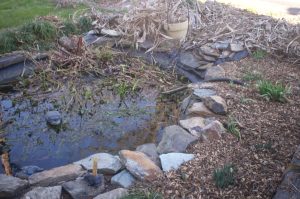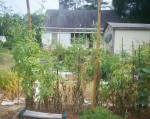Preserving food for the winter was a big thing in my youth. The source of every item used in the process was a known factor
A big thing in every sense of the word–long hours gathering vegetables and fruits, endless time preparing the treasure of the day, that hot sweaty period around the wood burning stove filling glass mason jars, tending the pressure cooker and the seemly endless clean up time. How did they do it?. Oh, yeah, always BIG batches of everything!
Hard, long, hours of labor, but oh what satisfaction, gazing at the well stocked pantry shelves, satisfied the family will eat well this year!
The stock was simple–maybe some salt added to vegetables, enough sugar in jams and jellies to preserve the fruit, little else.
Basic recipes and methods handed down from grandmother to daughter to granddaughter gave assurance the food was safe, sustaining; friendly competition to be the best cook was a fair guarantee that simple offerings would be good.
How would others know what the cooking was like?
Back then, if you happened to be visiting, for any reason, at mealtime you were invited to sit! It was impolite not to offer an invite, and not to accept the invitation.
My guess is that a lot of visits just happen to fall about the traditional eating times!
Times and customs change.
Few people, today, have the vaguest idea about preserving food.
Grocery shelves are packed with thousands of items, each screaming for our attention; each promising to fill some special need!
Labels, we half trust, outline myriads of ingredients in each can or package, listed according to percentage of volume.
Does it taste good?
I guess so, it’s the only kind I have ever eaten?
Is it good for me?
Probably not, if I believe all the studies that are sited yearly on unsafe food additives?
Do I care?
Well, yeah, but a guy’s gott’a eat!
What do you expect me to do, produce my own?
What a weird thought!
Which brings me to sharing my experience
Gardening with limited space, harvesting small batches–trying to overcome the big farm mentality–has proven to be a challenge for me. Why do small amounts seem insignificant when providing for my feeding needs. Can not figure that one out, just know it is.
Last year preserving figs brought me face to face with the reality of storing fruit for later use. The small batch of jam is delicious, but never ending it seems. No way, two of us will consume that much sugar laden bread smear! This year the tree is again overloaded. Maybe try drying them this go round.

From a small basket – a year’s worth – strawberry jam
A friend gifted the family with a beautiful basket of strawberries, hand picked from a local farm.
I am diabetic, so decided to try making no (or low) sugar jam. For comparison made a batch of ‘Sugarless Strawberry Jam’ and one of ‘Low Sugar Freezer Strawberry Jam’.
From a small basket of strawberries I made a total of 5 pints + about 8 oz of sample product. Not bad for what I called a small basket of fruit. As much strawberry jam as we will eat for awhile.
Folks, it is delicious! Can eat the sugarless one like Jello, if I wanted too! The sugar one is great. Both taste like fresh strawberries. They each must be refrigerated or frozen, since there is not enough sugar to act as preservative.
Labor was minimal, cost low, food delicious. satisfaction–priceless!
So, stop saying I can’t! A small basket of fruit, a minimum amount of sugar–you got a great product–for part of your groceries you can say ‘I did it myself”
 The rationalization is this annihilation is done in the name of science ( study it), our protection and preservation (it might do harm ), maybe boastful pride ( a trophy).
The rationalization is this annihilation is done in the name of science ( study it), our protection and preservation (it might do harm ), maybe boastful pride ( a trophy).

















